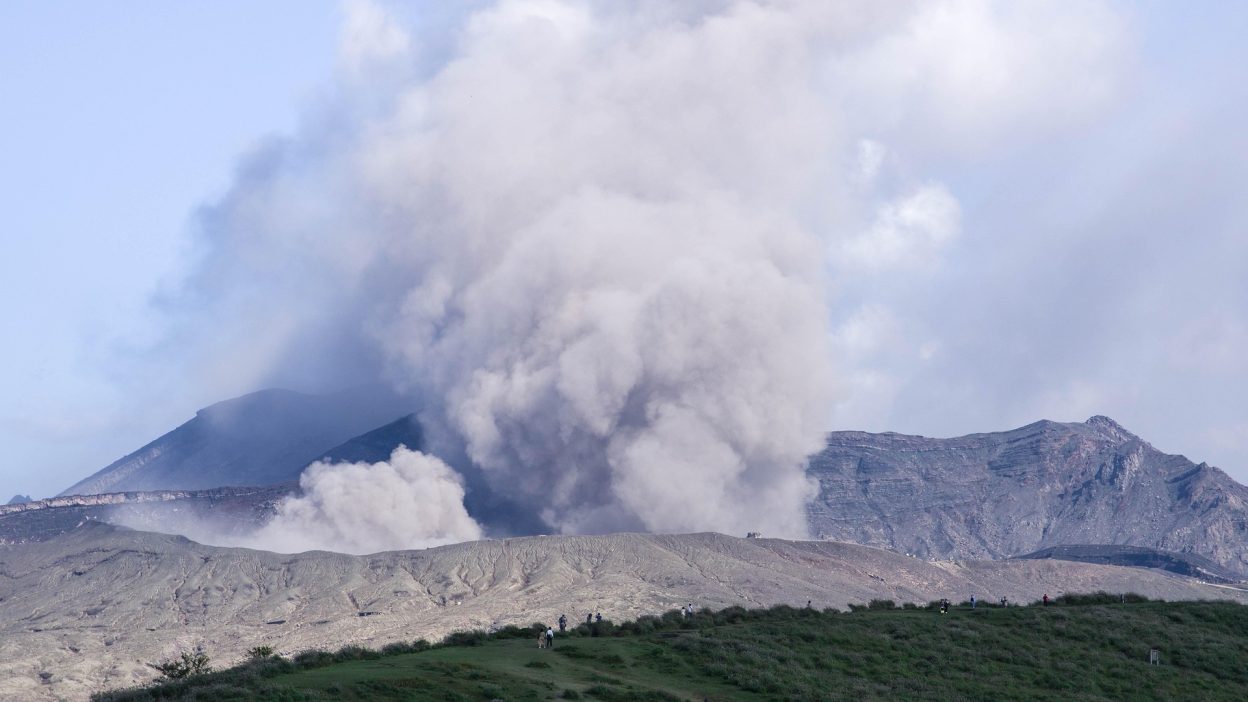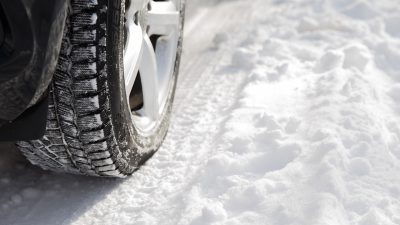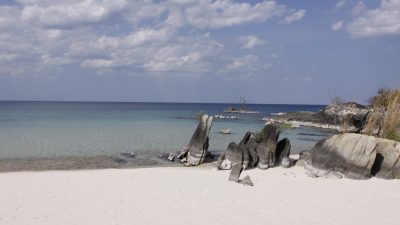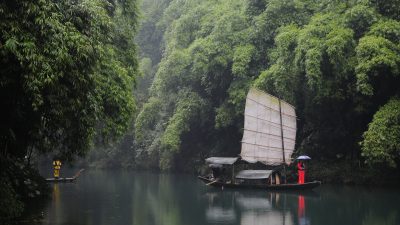Unraveling the Deadly 1902 Disaster and Its Lasting Impact
Introduction: The Eruption That Changed History
On 8 May 1902, Mount Pelee, a towering volcano nestled on the Caribbean island of Martinique, erupted in one of the most catastrophic events the world had ever witnessed. In mere moments, the peaceful, bustling city of St. Pierre, home to around 30,000 people, was reduced to smouldering ruins, and the island was forever scarred by one of the deadliest volcanic eruptions in recorded history. As molten rock, ash, and searing gas erupted violently from the volcano’s summit, they unleashed a destructive force so powerful it obliterated everything in its path. Yet, in the hours leading up to the eruption, few could have anticipated the sheer scale of disaster that was about to unfold.
The eruption of Mount Pelee was a defining moment in the history of natural disasters, not just for the unimaginable loss of life but for how it shifted our understanding of volcanic activity. The eruption sent a lethal pyroclastic flow down the slopes of the mountain at speeds exceeding 100 miles per hour, incinerating the city of St. Pierre and claiming almost every life in its path. In stark contrast to the usual warning signs that precede volcanic eruptions, Mount Pelee’s sudden and violent explosion caught both the residents and the world by surprise. The aftermath would leave the scientific community in shock, as it exposed the limits of knowledge about volcanic hazards at the time and set the stage for a new era in volcanology.
This catastrophic event is not merely a historical tragedy—it is a symbol of nature’s raw, uncontainable power. The eruption of Mount Pelee left behind a legacy of loss, resilience, and scientific awakening. With an estimated death toll of 30,000 people, it remains one of the deadliest volcanic eruptions in modern history. Yet, it was also the catalyst for modern volcanology, forcing scientists to reconsider the approach to predicting such eruptions. The tragedy of St. Pierre stands as a haunting reminder of the unpredictable forces of nature and the limits of human preparedness, urging us to look closer at how we understand and respond to natural disasters today.
The Stage is Set: Mount Pelee Before the Eruption
Mount Pelee, a stratovolcano towering 1,397 metres above sea level, had long been considered an imposing force on the island of Martinique. Its steep slopes and volcanic structure had seen relatively little activity in the centuries before the 1902 eruption, leading many to regard it as dormant, even though it had erupted intermittently over the past few hundred years. Its immense size and potential threat were clear, but prior to the eruption, there was a general underestimation of the danger it posed. The people of Martinique, particularly those living in St. Pierre, went about their daily lives with little knowledge of the impending devastation lurking within the volcano’s depths. The island’s prosperity and bustling city life masked the silent menace that was slowly growing beneath the surface.
In the months leading up to the eruption, subtle signs of volcanic unrest were dismissed as minor disturbances. Beginning in April 1902, residents of St. Pierre began to notice unusual activity: frequent tremors, rising temperatures in hot springs, and smoke billowing from the summit. Local authorities and scientists, however, failed to sound an alarm. Despite the presence of visible warning signs, including increased fumarolic activity and seismic events, the volcano’s eruptions were not anticipated to escalate to such a catastrophic scale. It wasn’t until the final days before the eruption, as ash began to fall and new eruptions intensified, that a sense of impending danger began to creep in. But by then, it was too late—St. Pierre, the vibrant city at the base of Mount Pelee, was ill-prepared for the catastrophic eruption that would soon change the course of history.
The Final Moments: The Eruption Unfolds
On the morning of 8 May 1902, the residents of St. Pierre were jolted from their normal routines as the volcano erupted with catastrophic force. What had started as minor tremors and a cloud of smoke in the preceding days suddenly escalated into a deadly eruption. By mid-morning, the first signs of danger became evident as a massive pyroclastic flow—a fast-moving, superheated cloud of gas, ash, and volcanic rock—descended from the summit of Mount Pelee, racing toward the city. The eruption unleashed a violent explosion that was heard as far as 160 kilometres away, and it was only minutes before the pyroclastic flow reached St. Pierre, burying the city in an inferno of extreme heat and suffocating gas.
The eruption was swift and merciless, with the destructive power of the pyroclastic flow completely overwhelming the city. Within minutes, St. Pierre, which had been a thriving urban centre, was reduced to ashes, and almost the entire population perished. Buildings collapsed, fires ignited, and the intense heat reached temperatures upwards of 1,000°C, causing instant death for those caught in its path. The city, once a symbol of life and commerce on the island, was now nothing more than a smouldering ruin. This eruption, occurring so quickly and unexpectedly, served as a chilling reminder of nature’s unpredictable and devastating force. The eruption of Mount Pelee on that fateful day forever etched itself into the annals of history, not just for its violence but for the profound impact it had on the scientific understanding of volcanic behaviour.
The Horrific Impact: Destruction and Chaos
The eruption of Mount Pelee was not just a natural disaster; it was a terrifying display of raw, uncontrollable power that left nothing in its wake. The city of St. Pierre, once a vibrant hub, was completely obliterated within minutes by the pyroclastic flow. This superheated cloud of volcanic material surged down the slopes of the mountain at speeds greater than 100 miles per hour, sweeping away everything in its path. Structures crumbled under the immense pressure, and the temperature of the eruption was so intense that it instantly incinerated everything—human and animal alike. The violence of the eruption was not just a matter of destruction; it was a violent annihilation of an entire community in the blink of an eye. The once-bustling city of St. Pierre was reduced to a ghost town, with not a single building left standing and the streets littered with ashes and rubble.
The human toll was even more devastating. Almost 30,000 people, including men, women, and children, lost their lives in the eruption. The vast majority of the victims were killed by the pyroclastic flow, as it consumed everything in its path. Some were buried under layers of volcanic ash, others suffocated by the scorching gases or died from burns so severe they were unrecognisable. The few who managed to survive the eruption did so under miraculous circumstances, often by finding shelter in caves or buildings that somehow withstood the onslaught.
Death Toll: A Tragedy of Unimaginable Proportions
- Overall Deaths: The eruption of Mount Pelee resulted in an estimated 30,000 deaths, making it one of the deadliest volcanic eruptions in modern history. The entire city of St. Pierre was wiped out almost instantly, with very few survivors. The vast majority of the victims were caught in the pyroclastic flow, which moved at incredible speed and reached temperatures so high they instantly killed anyone in its path. The eruption’s speed and intensity left little time for escape or warning, ensuring that the death toll was staggering.
- Detailed Breakdown of Victims: The destruction was overwhelmingly complete. The city of St. Pierre, which had been home to around 30,000 people, was reduced to ashes. Many victims died from the intense heat and suffocating gases of the pyroclastic flow, which was so hot that it charred the bodies of those caught in it. Others were crushed under collapsing buildings, while some were suffocated by ash or buried alive. The city’s population, including both residents and tourists, was caught completely off guard, and most had no chance to flee before the eruption’s violent impact.
- Comparisons with Other Disasters: To put the scale of the devastation in perspective, the eruption’s death toll dwarfs many other natural disasters of its time. For comparison, the eruption of Mount Vesuvius in 79 AD, which destroyed the Roman cities of Pompeii and Herculaneum, claimed around 2,000 lives. The eruption of Mount St. Helens in 1980, another of the deadliest volcanic events, killed 57 people. The sheer scale of Mount Pelee’s destruction, with its toll of 30,000 lives, makes it clear that this was an event of unparalleled magnitude in the history of volcanic eruptions.
- Survival Stories: Despite the overwhelming destruction, there were a few miraculous survival stories. One of the most famous survivors was Ludger Sylbaris, a prisoner who had been locked in a stone cell. While the rest of St. Pierre was engulfed in flames and ash, the thick walls of his cell protected him from the heat, allowing him to survive the eruption. Sylbaris later became a symbol of hope amidst the tragedy, as he was one of the very few people to survive what had been a total annihilation of the city. His survival story added an eerie, almost surreal element to an already incomprehensible disaster..
The Aftermath: Immediate and Long-Term Effects
As the thick, suffocating smoke from Mount Pelee’s eruption began to dissipate, the full extent of the devastation became painfully clear. The island of Martinique was left in a state of shock, where a scene of unimaginable destruction unfolded before the eyes of the world. The once-thriving city of St. Pierre—its streets teeming with life, commerce, and culture—was now a barren wasteland. There were no survivors in the city’s heart, and no trace of the vibrant community that had once called it home. The skeletal remains of buildings lay scattered like broken bones, and the streets were choked with ash so thick that it was impossible to distinguish day from night. The eruption had not only taken the lives of 30,000 people, but it had obliterated an entire way of life. The loss was incomprehensible, and the island’s economy was shattered as sugar plantations, crops, and other industries were buried under layers of ash. The lives of the survivors, now left to mourn their families and rebuild from the ground up, were irrevocably changed.
But the immediate aftermath was just the beginning. In the wake of the eruption, the entire island of Martinique faced environmental devastation that would stretch far beyond the destruction of St. Pierre. The soil, once fertile and rich, was poisoned by volcanic ash, and agriculture—the lifeblood of the island—became nearly impossible. For months, the people of Martinique struggled to cope with the scarcity of food and resources. Those who had survived the eruption were now faced with the challenge of rebuilding their homes and lives amidst the remnants of a catastrophe they could barely comprehend. It wasn’t just the physical scars that would last, but the psychological trauma that lingered long after the ash had settled. The eruption of Mount Pelee had not only changed the landscape of the island but had forever altered the course of its people’s history. The island of Martinique would never be the same again, its people forever haunted by the eruption’s tragic power.
Internationally, the eruption captured the attention of the world. Aid poured in from countries around the globe, yet no amount of resources could undo the irreversible damage. The loss of life and the environmental destruction were too vast to be fully repaired. The eruption, however, did not go unnoticed in the world of science. It forced a rethinking of volcanic monitoring and response, highlighting the dire need for a deeper understanding of volcanic activity and how to predict and mitigate such catastrophes. The lessons learned from the devastation of Mount Pelee would shape future volcanic research, disaster preparedness, and the ways in which the world responded to natural disasters for generations to come. While the island rebuilt, the memory of May 8, 1902, would never fade, and the eruption would always remain a stark reminder of nature’s unpredictable, unstoppable force.
The Scientific Awakening: Lessons Learned from Mount Pelee
The eruption of Mount Pelee was a wake-up call for the scientific community, forcing volcanologists and geologists to reevaluate their understanding of volcanic behaviour. Prior to the eruption, many scientists believed that eruptions could be predicted with a fair degree of accuracy based on observed signs, such as minor tremors or changes in the landscape. However, the sheer speed and ferocity of the May 8, 1902 eruption shattered this assumption. The volcanic event was not preceded by clear, typical warning signs, and this lack of predictive capability highlighted the gaps in knowledge that existed at the time. The eruption exposed the limits of early volcanic monitoring techniques and forced scientists to confront the reality that certain volcanic events could be far more unpredictable and catastrophic than previously imagined.
In the aftermath of the disaster, efforts to advance the study of volcanoes and improve disaster preparedness intensified. Mount Pelee became a focal point for the emerging field of modern volcanology, and new research methods were developed to study the behaviour of active volcanoes. One of the major scientific advancements that arose from the eruption was a greater understanding of pyroclastic flows—the deadly, fast-moving clouds of gas, ash, and rock that had decimated St. Pierre. The eruption also led to the establishment of more rigorous monitoring systems for volcanoes, including the use of seismographs and other modern technology to track volcanic activity. The lessons learned from Mount Pelee paved the way for future volcanic research, helping to prevent similar disasters by improving early warning systems and preparedness in regions with active volcanoes.
Could It Happen Again?
While no one can predict with certainty when or where the next catastrophic eruption will occur, Mount Pelee serves as a stark reminder that volcanic activity can strike with devastating force, often with little warning. Today, advancements in volcanic monitoring and prediction techniques have improved, but volcanoes like Mount Pelee remain a serious threat. Many active volcanoes around the world, especially in populated areas, continue to pose risks, and the potential for similar disasters cannot be ruled out. Continued vigilance and research are crucial to understanding and mitigating the dangers posed by these unpredictable natural forces.
Conclusion
The eruption of Mount Pelee on May 8, 1902, remains one of the deadliest volcanic disasters in history, claiming the lives of 30,000 people and completely destroying the city of St. Pierre. This catastrophic event highlighted the unpredictability of volcanic eruptions and underscored the limitations of scientific knowledge at the time. However, it also served as a pivotal moment in the development of modern volcanology, pushing forward advances in monitoring techniques and disaster preparedness. As we continue to study and learn from such events, the lessons of Mount Pelee remind us of the raw power of nature and the importance of remaining vigilant in the face of potential threats.
FAQ: Frequently Asked Questions about the Eruption of Mount Pelee
- How long did the eruption of Mount Pelee last? The eruption of Mount Pelee lasted for several months, with the most catastrophic event occurring on May 8, 1902. However, volcanic activity continued sporadically for a year after that.
- What caused the eruption of Mount Pelee? The eruption was caused by the buildup of magma beneath the volcano’s surface, which eventually triggered a violent explosion, resulting in the deadly pyroclastic flow.
- How many survivors were there from St. Pierre? Only one known survivor, Ludger Sylbaris, managed to survive the eruption, sheltered in a prison cell that protected him from the pyroclastic flow.
- Was Mount Pelee’s eruption a one-time event? No, Mount Pelee has erupted multiple times throughout history, with the most significant eruptions occurring in 1902 and again in the years following, though none as catastrophic.
- What were the long-term effects on Martinique’s economy? The eruption decimated Martinique’s economy, particularly its sugar industry, which took years to recover, leaving lasting impacts on the livelihoods of the island’s residents.
References
Mount Pelée begins to erupt, burying Caribbean city
1902 eruption of Mount Pelée, Wikipedia
https://en.wikipedia.org/wiki/1902_eruption_of_Mount_Pel%C3%A9e
The volcano that destroyed St. Pierre 1902
“Mount Pelee and the Eruption that Destroyed St. Pierre” – Smithsonian Magazine
YouTube links
The Eruption Of Mt Pelée – The Deadliest Volcanic Disaster Of The 20th Century (Brief History)
Mount Pelée: The Most Deadly Volcanic Eruption of the 20th Century
30,000 People Killed, Only One Survivor | The Eruption Of Mount Pelee | Timeline




